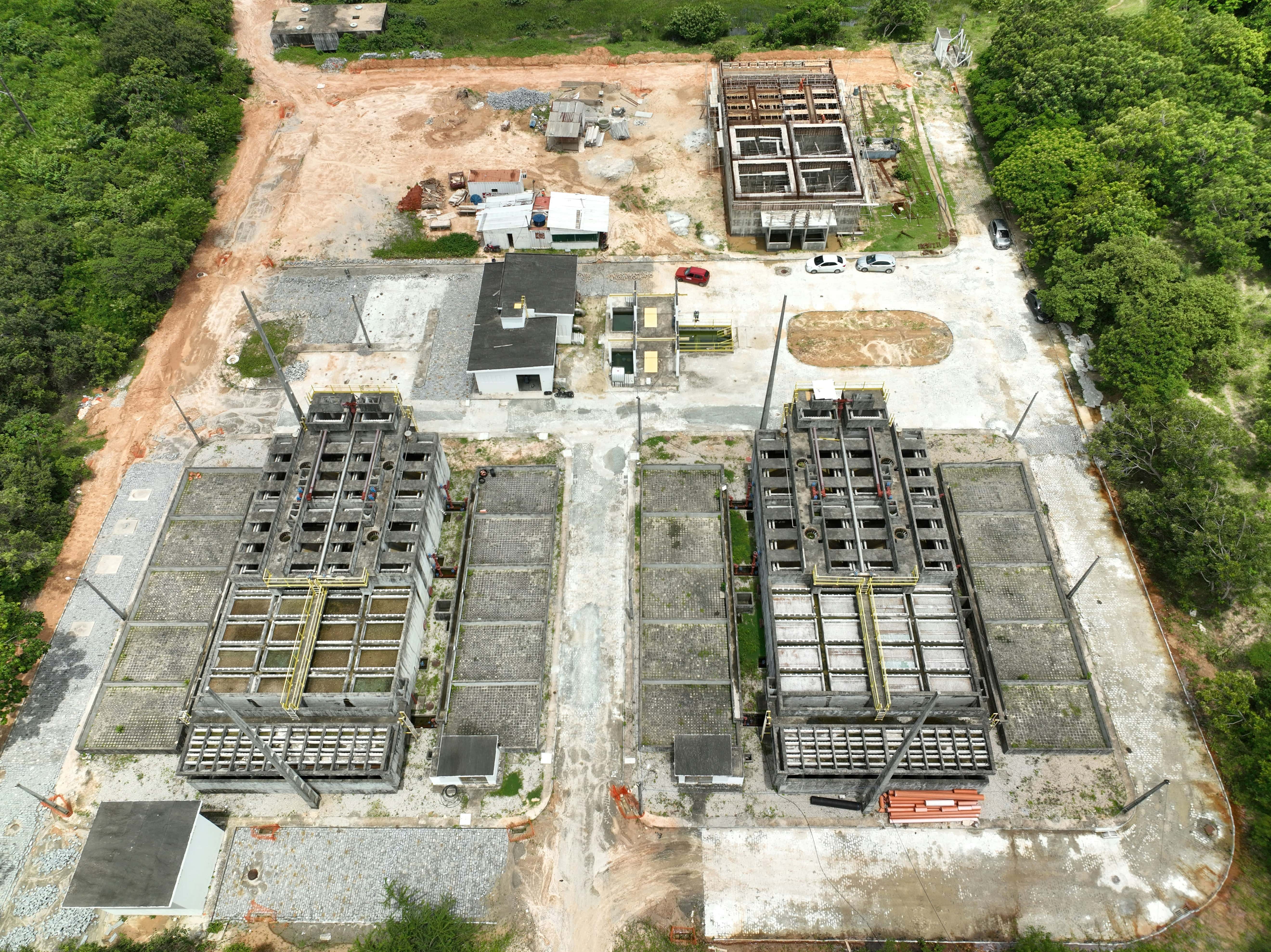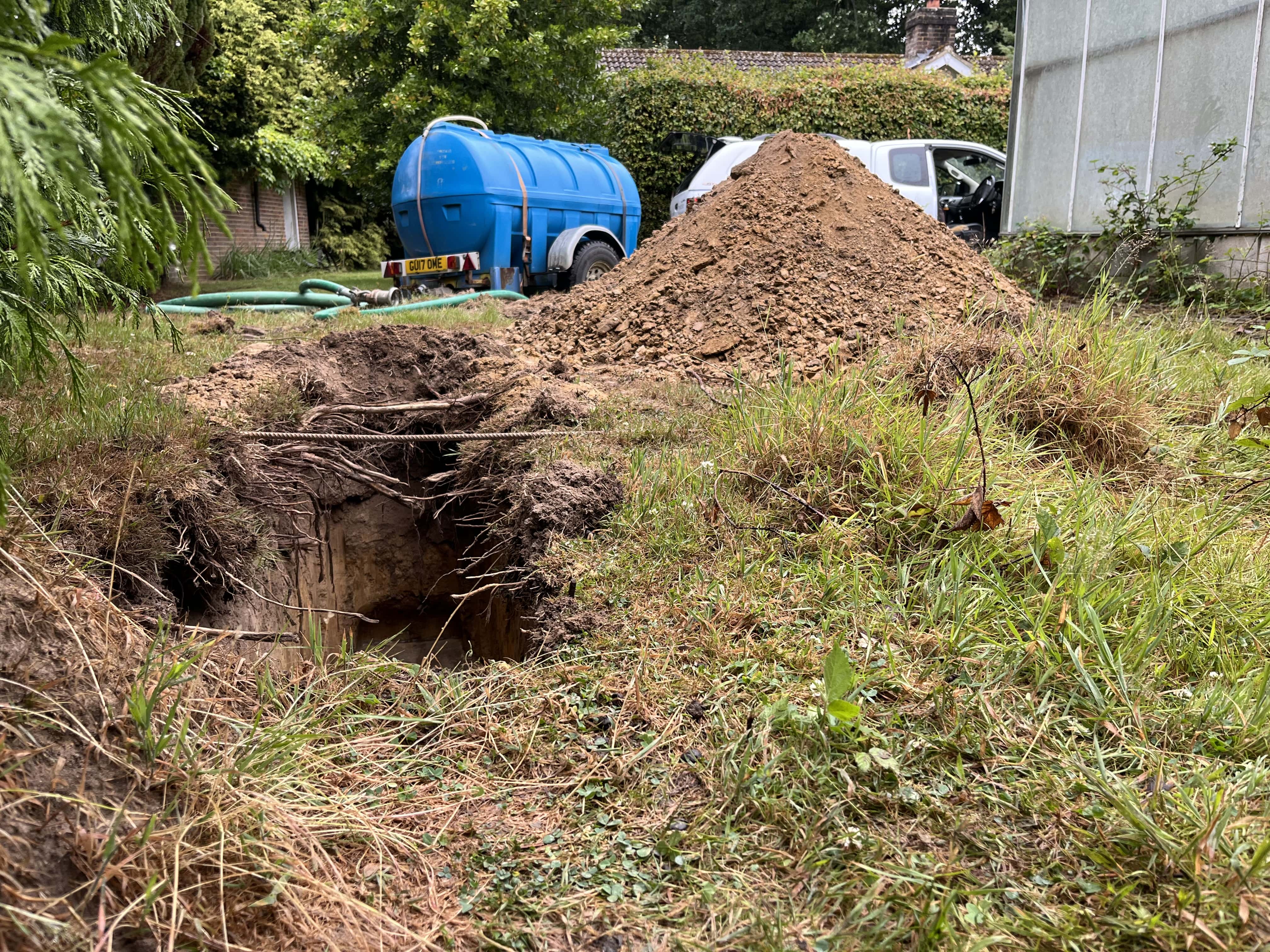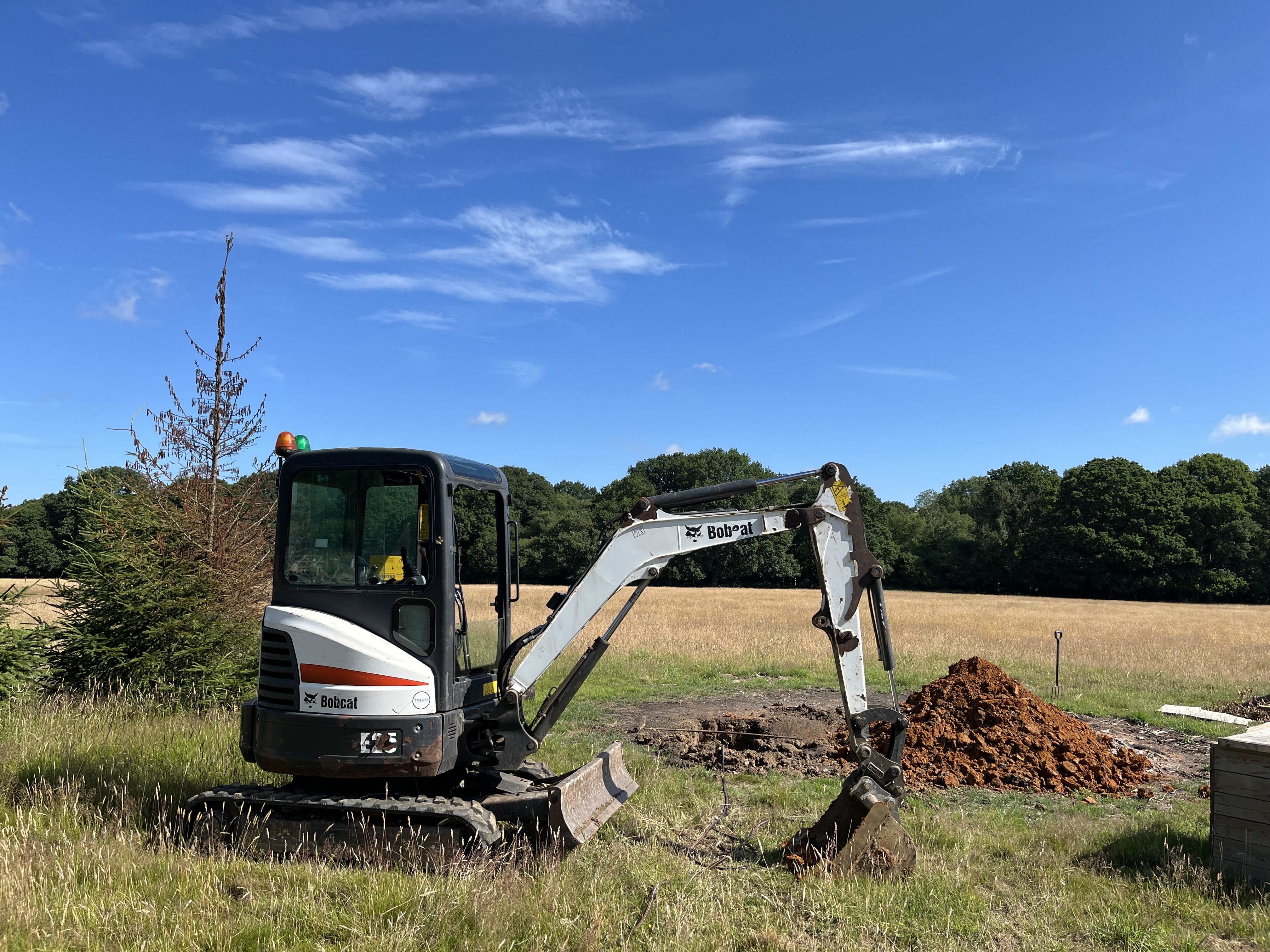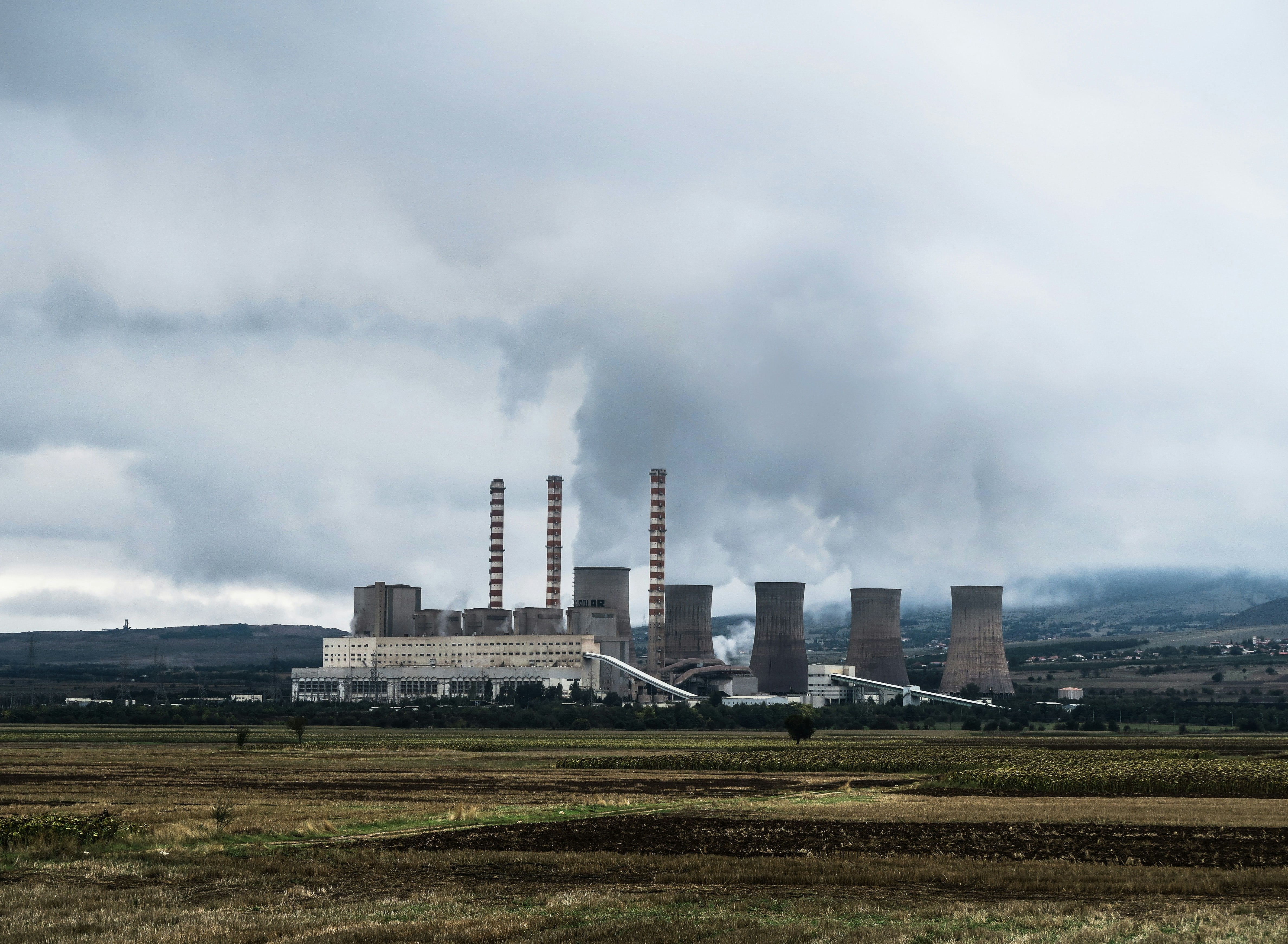Discharging Contaminated Land Planning Conditions in the UK

Redeveloping brownfield land in the UK offers huge opportunities, but it comes with responsibilities, one of which is assessing and managing contaminated land risks to ensure a site is safe and “suitable for its intended use”.
The good news is that with the right approach, assessing and dealing with contaminated land is manageable, and can be broken into a step-by-step process which unlocks a site’s full value rather than derailing your project.
This guide provides commercial and pragmatic advice on dealing with land contamination, drawing on UK regulations and best practice to help keep your development on track.
Why Contaminated Land Planning Conditions Matter
Contaminated land is more than just an environmental issue, it directly affects project costs, development schedules, and liability.
- Without proper assessment, planning permission may be withheld or delayed.
- Lenders and investors often require proof that a site has been assessed before financing.
- Unexpected contamination discovered mid-build can lead to costly “abnormal” remediation costs and major programme delays.
In practice, contaminated land is treated as a material planning consideration. Local Authorities therefore impose specific conditions requiring phased assessments, remediation (if needed), and evidence of compliance.
Typical Wording of Planning Conditions
Local Authorities tend to use standardised conditions that follow the Environment Agency’s Land Contamination Risk Management (LCRM) framework. The wording varies between councils, but a typical condition may follow this process:
“No development shall take place until the following components of a scheme to deal with risks associated with contamination have been submitted to and approved in writing by the Local Planning Authority:
A preliminary risk assessment (Phase 1 Desk Study);
A site investigation scheme (Phase 2);
An options appraisal and remediation strategy (Phase 3);
A verification plan (Phase 4).”
Phase 1: Desk Study (Preliminary Risk Assessment)
Example Planning Condition:
“No development shall commence until a preliminary risk assessment has been submitted and approved by the Local Planning Authority. The report shall include all previous uses, potential contaminants associated with those uses, a conceptual model of the site, and an assessment of risks arising from contamination.”
A Phase 1 Desk Study is a non-intrusive review of the site’s history and environmental setting to identify possible contamination risks.
Consultants analyse historic maps, records of industrial use such as permits or pollution incidents, landfill data, and put this in the context of the environmental setting (geology, rivers or surface waters and aquifers). They also carry out a site walkover, checking for signs like fuel tanks, stained soils, or unusual odours.
The outcome of that data collection enables the development of a Conceptual Site Model (CSM). This shows potential sources (things which may result in contamination), pathways (ways that contamination may travel through the environment), and receptors (such as people, water, or buildings that the contamination may impact).
If no credible linkages are identified across the full source–pathway–receptor linkage, the project may stop here, with regulators satisfied.
Phase 2: Site Investigation (Intrusive Survey)
Example Planning Condition:
“No development shall commence until a site investigation scheme, based on the preliminary risk assessment, has been submitted to and approved in writing by the Local Planning Authority to provide information for a detailed risk assessment of all potential receptors.”
If the Desk Study flags concerns, you’ll need a Phase 2 Site Investigation. This involves intrusive works such as drilling boreholes, digging trial pits, collecting soil and groundwater samples, and often installing ground gas monitoring wells. The samples are then tested in accredited labs for contaminants such as heavy metals, hydrocarbons, asbestos, or solvents.
Phase 2 provides hard evidence. It quantifies whether contaminants are present, how far they extend, and whether they pose risks to receptors. Consultants then refine the CSM and undertake a Quantitative Risk Assessment, comparing results to UK guideline criteria.
If contaminants are below thresholds, you can often close the case and satisfy planning. If not, the data provides the basis for designing a proportionate remediation strategy.
Phase 3: Remediation Strategy (Designing the Clean-Up)
Example Planning Condition:
“No development shall take place until a remediation strategy to deal with the risks associated with contamination has been submitted and approved in writing by the Local Planning Authority. The strategy shall include full details of the remediation measures, timetable of works, and site management procedures.”
When contamination is confirmed, the next step is a Remediation Strategy. This is a detailed clean-up plan that sets clear objectives, outlines methods, and explains how success will be verified.
Remediation options include:
- Excavation and disposal – quick but often costly.
- On-site treatment – e.g. bioremediation for hydrocarbons or chemical stabilisation for metals.
- Capping and containment – using clean cover soil or membranes to block exposure.
- Groundwater treatment – pumping and treating, or monitored natural attenuation.
- Gas protection – membranes and venting systems where methane or carbon dioxide are a risk.
Often the goal isn’t to remove every trace of contamination, but to break the source–pathway–receptor link in a safe, pragmatic way. For example, leaving soil in place beneath a car park or slab can be acceptable if exposure routes are blocked.
Phase 4: Verification (Validation) and Sign-Off
Example Planning Condition:
“Prior to occupation, a verification report demonstrating completion of the approved remediation strategy and the effectiveness of the remediation shall be submitted to and approved in writing by the Local Planning Authority. The report shall include results of monitoring, testing, and photographic evidence.”
Once remediation is complete, a Verification Report (sometimes called a validation report) is required. This provides the evidence that the agreed works have been carried out correctly and that the site is now suitable for its intended use.
The report might include waste transfer notes, lab certificates from confirmatory testing, and photographs of gas membranes or clean cover layers. Regulators will not discharge planning conditions until this evidence is reviewed and approved.
Commercial Benefits of Getting It Right
Discharging contaminated land planning conditions effectively delivers tangible commercial benefits:
- Avoid costly delays – conditions discharged early = no last-minute hold-ups.
- Protect investment value – funders, buyers, and insurers require clear evidence.
- Save money – proportionate remediation avoids unnecessary excavation and disposal.
- Reduce liability – robust documentation provides a legal defence if contamination issues emerge later.
Summary
Contaminated land planning conditions can look daunting, but they follow a clear, staged process. By tackling each phase in order, you’ll not only satisfy regulatory requirements but also protect budgets and unlock site value.
At Clear Environmental, we guide clients from Phase 1 Desk Studies through to remediation design and final Verification Reports, ensuring conditions are discharged quickly and cost-effectively.
When a Phase 1 Desk Study identifies potential environmental risks, the next step is a Phase 2 Site Investigation, also called an intrusive investigation. This critical stage gathers real-world data to confirm or rule out contamination, protecting your project from unforeseen costs, planning delays, or environmental liabilities.
In this guide, we break down:
- How Phase 2 builds on Phase 1.
- The different investigation techniques (and when to use each).
- Typical timescales.
- How laboratory testing refines the site’s risk profile.
- What to expect at the end of a Phase 2 investigation.
How Phase 2 Builds on Phase 1
While a Phase 1 is based on desk research and a site walkover, a Phase 2 collects physical evidence through soil, groundwater, and ground gas sampling.
In short:
Phase 1 = Identify Potential Risks.
Phase 2 = Confirm or Dismiss Risks with Hard Data.
The findings from Phase 2 enable:
- Quantitative Risk Assessments (QRA) based on actual contamination levels.
- Decisions about whether remediation is necessary.
- Planning condition discharge if no unacceptable risks are found.
Phase 2 Site Investigation Methods
Different methods are used depending on the site, the anticipated risks, and the required depth of investigation:
- Best For: Shallow contamination, made ground assessment, visual soil profiling, locating foundations.
- Typical Depths: Up to 4 metres.
- Equipment: Mechanical excavator or hand-dug.
- Best For: Shallow contamination, installation of ground gas and groundwater wells, restricted access sites, cost-effective sampling.
- Typical Depths: Generally 5–6 metres, but can extend up to 10 metres depending on ground conditions.
- Equipment: Window sampling rig (tracked or towed).
- Best For: Deeper soils, groundwater sampling, ground gas monitoring, and collecting geotechnical data.
- Typical Depths: Up to 30 metres or more.
- Equipment: Cable percussion drilling rig.
- Best For: Hard ground, bedrock investigations, and installation of deep groundwater wells.
- Typical Depths: Up to 100 metres or more.
- Equipment: Rotary drilling rig (open hole, cored, or augered).
Tip: On smaller development sites, a combination of trial pits and window sampling often provides excellent coverage at a cost-effective price.
Types of Laboratory Testing During Phase 2
After sampling, the materials collected are sent for laboratory analysis to determine contamination levels:
- Soil Testing:
- Heavy metals (e.g., lead, arsenic)
- Hydrocarbons (TPH, PAHs)
- Asbestos in soil
- Emerging contaminants (e.g., PFAS)
- Groundwater Testing:
- Soluble contaminants (e.g., hydrocarbons, BTEX, solvents)
- Metals in solution
- PFAS detection
- Ground Gas Monitoring:
- Methane, carbon dioxide, oxygen concentrations
- Flow rates (for CS classification)
The results are then compared against appropriate assessment criteria to determine whether remediation is needed.
What Happens After Phase 2 Sampling?
1. Data Analysis and Quantitative Risk Assessment (QRA):
Risk to human health, controlled waters, or property assessed.
2. Conceptual Site Model Update:
Confirmed pollutant linkages mapped and risk-ranked.
3. Decision Point:
No significant risks: Reporting and planning condition discharge.
Significant risks: Recommend remediation (Phase 3).
Phase 1 vs Phase 2 - Quick Comparison Table
FAQs About Phase 2 Site Investigations
What happens if contamination is found in a Phase 2?
If contaminants exceed safe levels, a Remediation Strategy (Phase 3) will be needed to outline how risks will be managed.
Can a Site Investigations rule out the need for remediation?
Yes. Many sites require no further action after a properly scoped Phase 2 investigation.
Is ground gas monitoring always required during a Phase 2?
Not always. It depends on the site's history, geology, and desk study findings.
Why a Clear Phase 2 Strategy Matters
A well-designed Phase 2 Site Investigation provides confidence, clarity, and control.
It ensures you're fully informed about site risks, avoids unnecessary remediation, and moves your project efficiently through planning.
At Clear Environmental, we tailor Phase 2 investigations to your site. No over-scoping, no hidden costs, just clear advice.
If your Phase 2 results raise concerns, understanding how to move forward with proportional, commercially realistic remediation is crucial.
To learn what happens next from Phase 2 to Remediation Click Here.
Related Services
What is a Phase 1 Desk Study (Preliminary Risk Assessment)?
A Phase 1 Desk Study (Preliminary Risk Assessment) is an initial environmental assessment that researches a site’s history and conditions to identify potential contamination risks.
Whether you're planning to develop land, submit a planning application, or purchase a brownfield site, understanding environmental risks early is essential.
A Phase 1 Desk Study (also called a Preliminary Risk Assessment, Contaminated Land Assessment or Land Quality Report) is the first critical step in managing those risks efficiently, helping avoid costly surprises later in your project.
This guide explains exactly what a Phase 1 involves, why it’s required, and what you can expect from the process.
What is a Phase 1 Desk Study?
A Phase 1 Desk Study is a preliminary environmental assessment that evaluates the potential for land contamination based on historical and current land uses.
It is called a “desk study” because it mainly relies on reviewing existing records and data sources, alongside a site visit.
It does not involve any intrusive ground investigation, that's reserved for Phase 2 Site Investigation if risks are identified.
In simple terms:
A Phase 1 identifies if there’s a potential problem — before you commit to site purchase, design, or construction.
Why is a Phase 1 Desk Study Needed?
A Contaminated Land Report is often required to:
- Support planning applications (especially brownfield or previously developed sites).
- Satisfy lender due diligence for property transactions.
- Manage liability and avoid unexpected abnormal costs.
- Confirm if further investigations (Phase 2) are needed.
Without a Phase 1, local authorities, insurers, and funders may refuse to progress development or financing.
Key Components of a Phase 1 Desk Study
A thorough Phase 1 typically includes:
What Does a Phase 1 Report Contain?
A typical Phase 1 Desk Study Report will include:
- Executive Summary (key findings and recommendations).
- Site location and description.
- Historical land use review (maps and aerial photography).
- Environmental setting (geology, hydrology, groundwater).
- Regulatory database review (permits, enforcement notices, pollution incidents).
- Walkover survey findings (including annotated site photos).
- Preliminary Conceptual Site Model (CSM).
- Risk assessment and clear conclusions.
- Next steps, if further investigation is needed.
At Clear Environmental, our Phase 1 reports are concise, commercially-focused, and designed to satisfy planning authorities and lenders without unnecessary complexity.
How Long Does a Phase 1 Desk Study Take?
Most Phase 1 assessments can be completed within 10 Days.
We also offer fast-track services if you’re working to tight planning or transaction deadlines.
Phase 1 Desk Study vs. Environmental Search: What's the Difference?
Key point: An Environmental Search is not a substitute for a Phase 1 — it’s simply a basic desktop screening.
Why Clear Environmental for Your Phase 1?
A Phase 1 Desk Study isn’t just a box-ticking exercise, it’s your first opportunity to manage risks, reduce abnormal development costs, and protect your investment.
At Clear Environmental, we combine technical expertise with commercial insight to deliver Phase 1 Reports that meet planning, legal, and financial requirements quickly and clearly.
Related Services
FAQs About Phase 1 Environmental Desk Studies
When should I commission a Phase 1 Environmental Report?
Ideally before site acquisition or at the earliest planning stage, so risks and costs are identified early.
Will a Phase 1 Desk Study always recommend a Phase 2 Site Investigation?
No — many sites with clean histories and no risk linkages can be signed off at Phase 1.
Who needs a Phase 1 Environmental Desk Study?
Developers, property investors, planners, architects, solicitors, and lenders commonly require Phase 1 studies.
Will the council accept my Phase 1 report for planning?
Yes — provided it follows UK guidance (such as EA Land Contamination Risk Management (LCRM)) and is prepared by qualified specialists.
What happens if my Phase 1 shows contamination risks?
We’ll outline the recommended Phase 2 site investigation scope and cost early, so you remain in control.
FAQs About Contaminated Land Assessments
What is a contaminated land assessment?
A contaminated land assessment identifies whether land poses environmental or health risks, helping manage liabilities before development or purchase.
What is the difference between Phase 1 and Phase 2?
Phase 1 is a desktop and site walkover study identifies potential risks. Phase 2 collects soil, water, and gas samples to confirm actual contamination.
How long does a Phase 1 Environmental Report and Phase 2 Site Investigation take?
A Phase 1 takes 10 days. A Phase 2 takes 4-6 weeks depending on complexity.
What happens if contamination is found during a Site Investigation?
A remediation strategy is developed to remove or manage the risks to acceptable levels.
Do I always need a Phase 2 investigation?
Not always — if Phase 1 finds no significant risks, Phase 2 may not be necessary.
FAQs About Contaminated Land Assessments
What’s a Ground Gas and Vapour Strategy (GGVS)?
A GGVS is a targeted investigation to assess the presence and risk of gases such as methane, carbon dioxide, and vapours. It typically involves installing monitoring wells, conducting several monitoring visits, and using standards like CIRIA C665 and BS8485 to determine whether protection is needed.
Do I need gas monitoring for a small extension in RBKC?
Not necessarily. If the Phase 1 Ground Gas Risk Assessment confirms no credible risk — for example, if the site is underlain by intact London Clay with no Made Ground — monitoring may not be needed. In low-risk situations, RBKC may accept the installation of basic gas protection measures with a verification statement instead.
How long does a ground gas investigation take from start to finish?
The monitoring phase typically requires 3 - 6 visits spread over a few weeks, depending on site complexity and weather pressure conditions. Including report preparation, the whole process can take around 6 - 12 weeks.
Can I reuse historical ground gas data for planning?
Yes — provided the data is recent, reliable, and representative of current conditions. Clear Environmental reviews historic site investigation records early to help reduce costs and avoid unnecessary repeat monitoring.
What happens if gas risks are confirmed?
If gas concentrations exceed safe thresholds, you’ll need to install mitigation measures such as membranes, venting layers, or structural barriers. Clear Environmental will design a practical, proportionate solution and prepare the necessary Remediation and Verification reports.
What should be included in the Ground Gas Verification Report?
The Verification Report must include photographic evidence, product specifications, a signed statement of installation quality, and confirmation that gas protection was installed in accordance with RBKC expectations. For some projects, additional tracer gas testing may be required.


.jpg)













